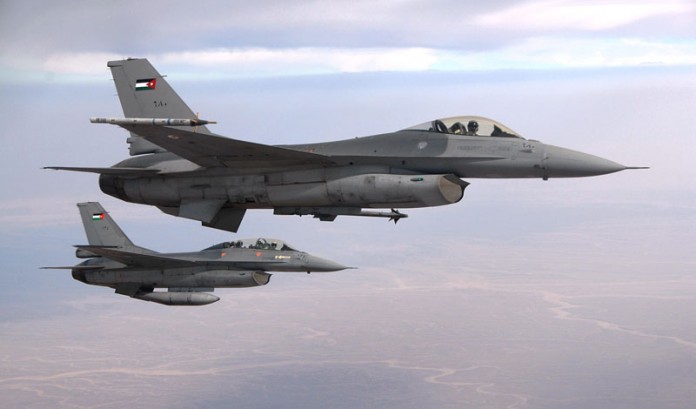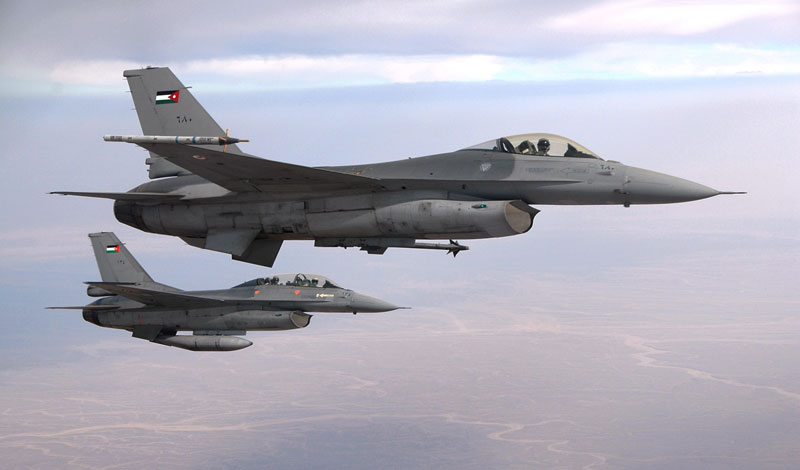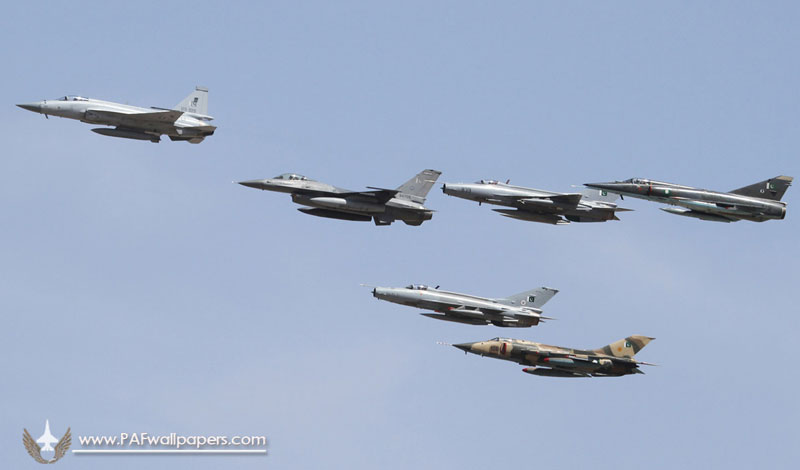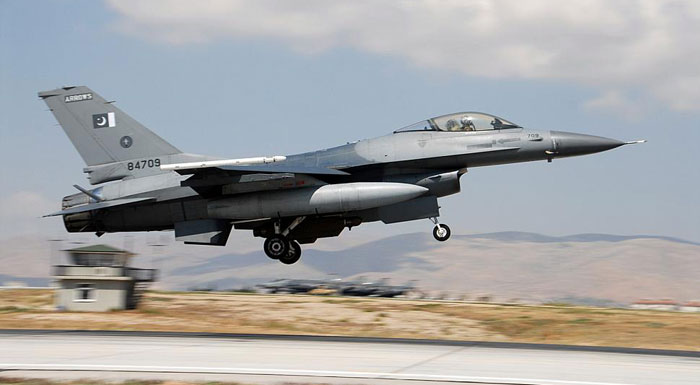
The Pakistani Air Force (PAF) has acquired a squadron of F-16 multi-role fighter aircraft from Jordan. The early production Block-15 fighter jets will be inducted inducted into the service in March 2014, next month, Pakistan’s TheNews reports.

Of the fighters acquired from the Royal Jordanian Air Force, 12 of the aircraft are single seaters A models and one is a twin-seat F-16B. Jordan has recently acquired 15 similar aircraft – F-16A/B MLU from the Dutch Air Force, and expect these aircraft to be delivered in 2015. The aircraft Pakistan is receiving have also undergone MLU providing service and are cleared for 20 years operations or 3,000 flight hours on average. Pakistan has already received a number of F-16s
Pakistan has been contemplating to acquire more used planes for the PAF from other countries while the induction of new production JF-17 Thunder continues. The JF-17 is a co-production of Pakistan and China.
Through the upgrade process carried out at the US Air Force Ogden Air Logistics Centre, structural upgrades were performed to extend the aircraft life from the designed 4,000 to 8,000 hours flying time. Other modifications include changes to the engine bay, to receive the upgraded Pratt and Whitney F100-220E engine. Most of Pakistan’s F-16s are of early generation A/B models, acquired from US surplus and upgraded through MLU. Some were delivered free of charge by the US Government. The new acquisition will bring the Pakistani Air Force F-16 fleet to 76. Only 20 are of more modern make, namely F-16C and F-16C/D Block 52.

Through the years Pakistan has been a keen ‘collector’ of Dassault Mirage III/V fighter jets. Between 1967 and 1982 Islamabad bought 66 new Mirage III/V, but through the 1990s ‘collected’ over 130 of the fighters in the surplus market, from the French, Australian and Lebanese air forces. Many of these were modernized through the three phases ROSE program, improving avionics, weaponry and operational capabilities, associated with special missions, special weapons and night capabilities. The F-16, while adding many advanced capabilities, is not fulfilling many of these capabilities, therefore, it can replace the A-5C and F-7s in service, but not the Mirages.
Buying second hand fighters is one way for the Pakistani Air Force to manage the financial pressure that has limited its modernization since 2007. The acquisition of the JF-17 Thunder remains the single, highest priority, for which Islamabad secured a Chinese loan to keep production on track at an annual rate of 18 aircraft per year with 50 (Block I) jets in service. Defense News reported. Another significant investment was the acquisition of four Saab2000 Erieye early warning and control (AEW&C) aircraft for US$1 billion, the last of those aircraft was delivered in 2010. (It is unclear how many of these are operational, one of the four was reportedly damaged or destroyed in August 2012 by a Taliban attack on the Kamra air base.)
Production of 50 Thunders of the second block began in December 2013. The Thunder Block II has improved avionics, weapons load and carriage capability, a data link and an electronic warfare suite, plus an in-flight refueling capability. With these enhancements the cost of the Thunder has increased from US$15 million to $25 million, according to Dawn. Pakistan’s requirement is for up to 250 planes to the F-7 and, eventually, Mirage III/5 fighter aircraft currently in service. The Thunder has already replaced the A-5C Fantan strike fighter with two squadrons.
While Pakistan is seeking relative parity with India, the PAF currently has no counterpart for India’s Su-30MKI, nor the future Rafale, (when and if the MMRCA is to be fielded). Pakistan has been considering buying Chinese FC-20 (J10) fighter planes they considered could be a fair match to the Rafale. However, it is now considered that Thunder Block III and more upgrades to their F-16s, bringing the Falcons to the Block52 level could satisfy the PAF requirements for the near term.
Pakistan and China are also working on a combat-capable, two-seat conversion trainer variant of the Thunder, which would meet Pakistan Air Force requirements for special missions and night attack, as well as improve export sales prospects for the aircraft. Further improvements are planned for the Block III, a version which is currently on paper, but could enter design phase in 2016.



















